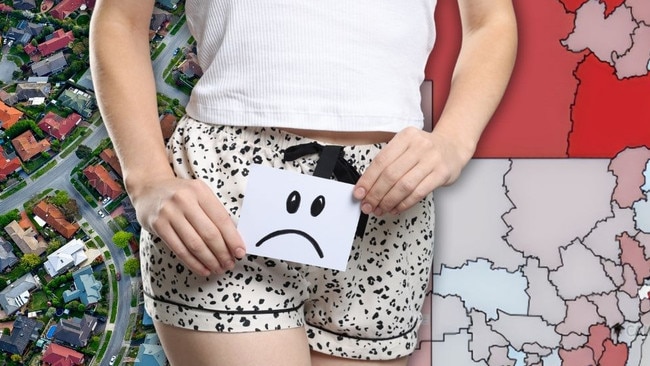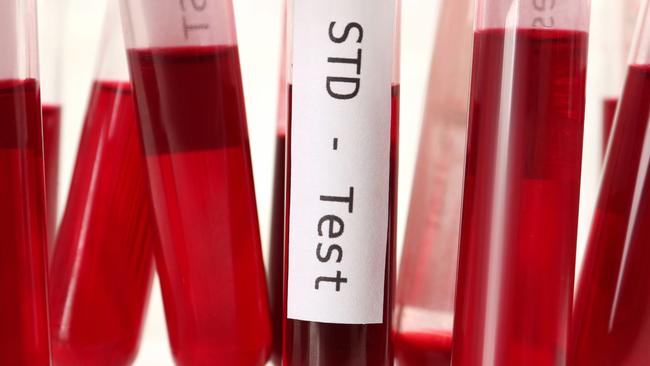Geelong, Surf Coast sexually transmitted infection rates
Geelong’s rates of gonorrhoea and infectious syphilis have risen, as experts warn of a hidden epidemic of sexually transmitted infections that needs an urgent and co-ordinated emergency response as cases spike across the country. Search the map.

Health
Don't miss out on the headlines from Health. Followed categories will be added to My News.
Geelong’s rates of gonorrhoea and infectious syphilis have risen, as experts warn of a hidden epidemic of sexually transmitted infections that needs an urgent and co-ordinated emergency response as cases spike across the country.
But, the region has seen a decline in overall STIs, with rates of hepatitis C, hepatitis B and chlamydia also declining.
Analysis of the most recent national STI data published this month from UNSW’s Kirby Institute shows that the notification rate of all STIs declined by 19.4 per cent between 2016 and 2023.
Geelong’s rates of infectious syphilis rose from 4.7 cases, per 100,000, in 2014-16 to 14.8 in 2021-23, while rates on the Surf Coast rose from 2.2 to 9.4 over the same period.
For gonorrhoea, Geelong’s rates increased from 37 in 2014-16 to 55.8 in 2021-23.
The Surf Coast’s rates jumped from 29.8 to 58.5 over the same period.
Stonnington West in Victoria, which is made up of the affluent areas of South Yarra, Toorak, Armadale and Windsor, had the second biggest increase in chlamydia rates in the country.
Monash University Professor Jason Ong – the director of Australia’s largest public sexual health clinic run by Alfred Healthin Melbourne – is the lead author of a new international STI study published in the May issue of eClinical Medicine.
It highlights that with 374 million new curable STI bacterial cases annually, World Health Organisation targets to curb the global epidemic are “a long way” from being met.
Across Australia there has also been an alarming increase in babies dying from congenital syphilis after being infected in the womb by their mothers.
Untreated, around half of these congenital syphilis infections end in miscarriage, stillbirth, neonatal death or permanent disability.
Dr Belinda Hengel, a Kirby Institute researcher at the UNSW, said they had found a heartbreaking 25 per cent of the babies born with congenital syphilis were stillborn.
She noted significant efforts to reduce gaps in antenatal care access and increase syphilis testing for women.
Where STIs are rising in Australia
“In 2024 there were six cases reported, down from 20 the year before. However, even one case of congenital syphilis is too many,” the researcher said, adding it was preventable and even one case represented a failure in our health care system.
“We need to understand what strategies have worked to improve rates of syphilis screening, particularly for women of reproductive age, and scale up these strategies nationally where relevant.
“Within urban and regional areas, access to care for individuals who experience disadvantage is leading the rise of cases. Publicly funded sexual health services and outreach services are the key to improving testing coverage.”
Professor Ong said there had been an under-investment in our health systems in terms of poor access.
“For example, in Victoria, the Melbourne Sexual Health Centre is the only sexual health clinic for the whole of Victoria, so we are meant to be serving around five million people which is almost impossible,” he said.
“Whereas NSW has about 30 sexual health clinics, so there’s a big disparity across states.”

But Professor Ong said additional sexual health clinics were not the full answer to the problem.
“I think there’s stigma around this topic. So even though you have so many clinics, if people don’t feel comfortable attending the clinics, they won’t turn up,” he said.
“We need to think about the structural changes that need to happen rather than focus on a blame game.”
He said to control STIs more effectively, there needed to be a shift to prioritising accessible, stigma-free health services, leveraging technological advances and investing in comprehensive public health policies.
Professor Ong said hardly anyone was using condoms and this had led to increased rates of STIs.
“It is for a variety of reasons, predominantly driven by things like people are no longer in fear of getting HIV,” he said.
“They also think an STI is curable so they don’t mind getting it. So they drop the condoms. Condom campaigns have also been underfunded in recent years.”
Originally published as Geelong, Surf Coast sexually transmitted infection rates


